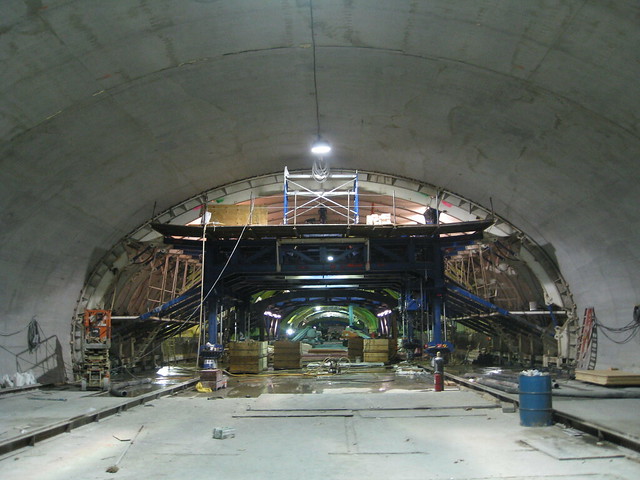Here’s an interesting tidbit from The Wall Street Journal today: With some federal seed money, New York City is going to invest in its own version of transit-oriented development in an effort to “revitalize areas around under-developed transit hubs.” According to the report, New York’s Department of City Planning will use the $3.5 million to explore ways to add housing stock and commercial development to areas along the city’s commuter rail lines. This should include spots in East New York and in the Bronx along Metro-North. The Journal says the city will search for ways to develop areas “around subway stops” as well.
What’s intriguing but also odd about this news is how New York City is one giant transit-oriented development. Outside of a few pockets of eastern Queens and southern Brooklyn, the entire city is close enough to a frequent bus route or subway stop to be well within acceptable walking distances. Rehabbing the area around the LIRR stop in East New York is more a matter of urban reclamation than transit-oriented development. The neighborhood is already well-served by multiple subway routes.
Ultimately, transit-oriented development through what are ostensibly low-income neighborhoods won’t work without a corresponding change in fare policy. It might be faster for a commuter to hop the LIRR in East New York to get to downtown Brooklyn or jump on the Metro-North stops through the Bronx to reach Grand Central. But the fares — $5 per ride off peak, $7.25 during peak hours — are far too high to convince riders to eschew the 3 train in Brooklyn or the 4, B and D in the Bronx. We’ll see how this goes.



 By allowing motorists to ride for free across a select group of bridge is costing the city nearly $1 billion in annual revenues, the city’s Independent Budget Office said recently. The IBO has released its
By allowing motorists to ride for free across a select group of bridge is costing the city nearly $1 billion in annual revenues, the city’s Independent Budget Office said recently. The IBO has released its 